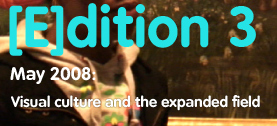Image/Sound/Text:
- Intro
- 'I am': self - identity among participants
- First Encounters
- Joining up the dots
- Domestic space and objects of significance
First Encounters
Deep Rajput and Nicola Oyejobi are participants from the most recent wave of recruitment, which happens to be a smaller group than the previous waves. I have found working with a smaller group to yield richer information as more time can be spent with each participant's subjective experience of each piece. They both had their first Tate Encounters (first ever visits to Tate Britain as well as first visits in the context of the research project) and significant moments happened for both of them.
Deep, on seeing Edward Burne Jones’ The Last Sleep of Arthur in Avalon, was reminded of a song by Eminem 'Like Toy Soldiers' that is about a boy who was shot, and he played it to me on his Ipod while we looked at the painting. Laura Kunz, a participant from the second wave, filmed the event. This was the first time a participant had made a direct connection between an artwork and a piece of music, and indeed the first time I had been asked if it was allowed to listen to music in the gallery. On this occasion, and while encountering several other pieces, Deep has consistently made connections with elements of his lived experience. An absence for him was art objects relating to Sikhism, as his religion forms an increasingly important part of his identity.
Nicola, on our way out through the Return of the Gods exhibition, caught sight of Edward Burra’s Harlem – an image which had a strong and long lasting significance for her through her teenage years, but which she had never seen ‘in the flesh’.
During this visit, it was clear that the camera has a relationship to other technologies, and is only a point in a network. Capturing these points of encounter and association on video is again a clear example of how an ‘on the move’ and networked ethnography facilitates (has a presence in, and can be present at) the emergence of these moments where we are able to make use of technologies and media that participants have on their person.
The necessity of being able to act with impromptu scenarios is also illustrated here. We were at the time of these ‘encounters’ following David Dibosa’s workshop model, referred to as ‘Encounters with Artefacts’, where participants are encouraged to choose a theme from an extensive list, and to make connections between works in Tate Britain and their lived experience. Although certain works are suggested for each theme, participants are encouraged also to select their own. Regularly, participants are drawn to certain works while we are on our way to a ‘suggested’ work, and as such they cut across the framework of a fully structured methodology. It is in these nexus that the richest data emerges.






